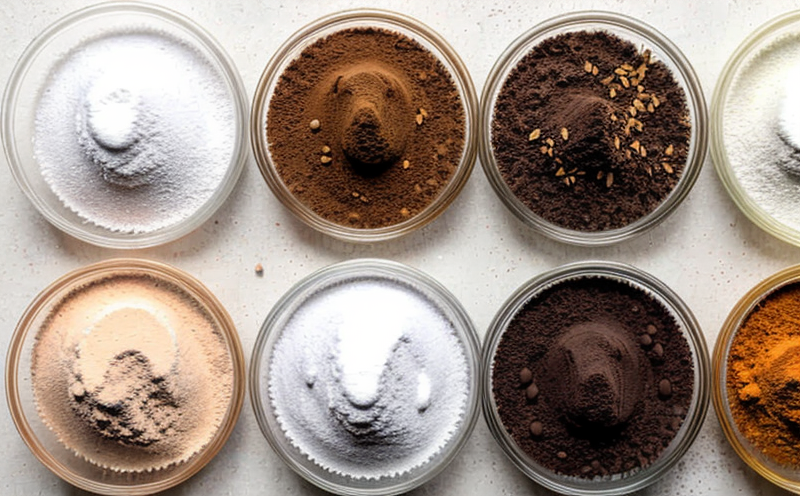AOAC 990.25 Acesulfame K Analysis in Confectionery
The analysis of Acesulfame K (a popular low-calorie sweetener) in confectionery products is critical for quality control, compliance with regulatory standards, and ensuring product safety and accuracy. The AOAC 990.25 method provides a robust framework for quantifying Acesulfame K in various confectionery items such as candies, gums, and hard sweets.
This method employs High-Performance Liquid Chromatography (HPLC) with UV detection to achieve accurate results. The AOAC 990.25 procedure is widely recognized for its precision and reliability in the food industry. It ensures that manufacturers can meet stringent requirements set by regulatory bodies like the FDA, EU regulations, and other national standards.
The process involves several steps: sample preparation, extraction of Acesulfame K from the confectionery matrix, and subsequent chromatographic analysis. The method is designed to be sensitive enough to detect even trace amounts of this sweetener in complex food matrices, making it essential for quality assurance programs. Compliance with AOAC 990.25 guarantees accurate labeling and prevents potential legal issues related to false claims about the caloric content or sugar-free attributes of confectionery products.
The method is particularly useful when dealing with products that contain multiple ingredients, as it can differentiate between naturally occurring sugars and added sweeteners like Acesulfame K. This precision helps companies maintain product consistency while adhering to market demands for healthier alternatives in the confectionery sector.
Our laboratory uses state-of-the-art HPLC equipment calibrated according to international standards (ISO 17025) to perform these analyses. The use of standard solutions and certified reference materials ensures that results are accurate and reproducible, meeting both internal quality control requirements and external regulatory expectations.
The AOAC 990.25 method is not only applicable in confectionery testing but also supports broader applications within the food industry where accurate quantification of sweeteners is necessary. By leveraging this method, companies can ensure that their products meet strict nutritional labeling guidelines, support research and development efforts aimed at healthier product formulations, and contribute to more transparent communication with consumers.
Through rigorous adherence to AOAC 990.25 standards, we provide clients with reliable data that supports informed decision-making processes throughout the entire supply chain, from raw material sourcing to final product release.
Scope and Methodology
The scope of this service encompasses all aspects related to determining the presence and concentration levels of Acesulfame K in confectionery products. This includes:
- Detailed sample preparation techniques tailored specifically for different types of confectionery.
- Extraction protocols optimized for efficient separation of Acesulfame K from other components present in complex food matrices.
- Standardized calibration procedures ensuring accurate quantification results.
The methodology employed follows the guidelines outlined by AOAC 990.25, which emphasizes precision and accuracy in detecting low concentrations of this sweetener. Our team ensures that every step adheres strictly to these specifications to deliver reliable outcomes.
Benefits
- Informed Decision-Making: Accurate data allows manufacturers to make informed decisions regarding formulation changes, ingredient sourcing, and labeling strategies.
- Regulatory Compliance: Ensures strict adherence to international standards like ISO 17025, providing peace of mind for those dealing with regulatory bodies.
- Quality Assurance: Helps maintain high product quality by identifying any deviations from expected levels early on in the production process.
- Consumer Trust: Transparency about ingredient content builds trust among consumers who value health-conscious choices.
Use Cases and Application Examples
This service finds application across various segments of the food industry, including confectionery manufacturers, suppliers of raw materials for these products, and regulatory agencies overseeing compliance. Specific use cases include:
- New Product Development: Identifying optimal levels of Acesulfame K that enhance taste without compromising health benefits.
- Supply Chain Management: Ensuring consistency across batches by verifying the exact amount of sweetener present in incoming materials.
- Quality Control: Regularly monitoring production lines to catch any inconsistencies early on, preventing costly recalls later down the line.
- Labeling Accuracy: Guaranteeing that all nutritional information provided on packaging accurately reflects actual ingredient content.





